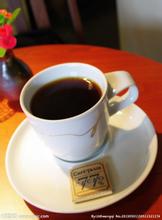Description of Flavor of Coffee beans in Latin America introduction to Grinding and Calibration method
Flavor Description of Latin American Coffee Bean Taste Variety Characteristics Introduction to Grinding Scale Treatment
Mexican coffee is produced from Cotepe and Veracruz in the north to Pulmas in the central Oaxaca region to Chiapas in the southernmost region, and the flavors vary from region to region. Although Mexico has many producing areas, because the quality stability is not high, it has to try many ways to pick high quality coffee. Basically, the coffee standards in Oaxaca and Chiapas are relatively neat. Chiapas is adjacent to the Huehuetenango region of Guatemala, so its flavor is similar. Mexico is also a major producer of certified organic coffee. Generally speaking, Mexican coffee flavor is lighter, but mild and delicate, and the aroma is good, so it is worth a try.
Colombia aroma 3.5 points brightness 4.5 points mellow 3.5 points flavor 4.5 points aftertaste 4.5 points
Roast: Medial/City/Full city/Espresso/Dark/French Colombia beans are among the few roasted beans that range from light to dark, from light to clean to dark sweet
Colombia beans will have different styles.
Colombia, once the second-largest coffee producer after Brazil but now third, overtaken by Vietnam, is the world's largest supplier of washed beans. Colombia has become synonymous with good coffee after years of image building. Although the flavor is balanced, the texture is thick, the acidity is bright, and the aroma is OK, but on closer inspection, most of the Colombia beans are mediocre and have little personality. When choosing Colombia beans, you can't just look at the grade mark, but pay attention to the production area, because Colombia is currently graded according to the size of beans, so the Supremo or Excelso on the coffee bag refers to the size of beans rather than the quality, but the size of beans actually has no inevitable relationship with the flavor of the entrance, but the altitude of the origin and the taste are closely related, so this grading system is often criticized by people. In fact, most of them,
South American countries have moved to elevation grading, but only Colombia maintains the traditional grading system, and many Colombia coffee-makers have recognized this and begun to demand a change in the grading system. Colombia's famous large producing areas include Medellin, Armenia and Manizales, so MAM is sometimes seen on the bag containing coffee, which means that the coffee beans may come from any of these three producing areas. Almost all of Colombia's finest coffee beans are grown on traditional small farms, which grow old coffee trees of the Typica variety. The good tree species and careful harvesting and handling procedures result in extremely high quality, but relatively low yields

Important Notice :
前街咖啡 FrontStreet Coffee has moved to new addredd:
FrontStreet Coffee Address: 315,Donghua East Road,GuangZhou
Tel:020 38364473
- Prev

An introduction to the legal countries for the treatment of coffee beans in Latin America
Mexico (Mexico) aroma 3 points brightness 4 mellow 3 points flavor 4 points aftertaste 4 points suitable for baking: Full cityfull city, roast to the beginning of the second explosion to start the pot, whether it is mixed with the formula to make Espresso or brewing single product, Mexican coffee beans can be said to have a unique flavor. Mexican coffee from Cottpe and Villa in the north
- Next

Do ordinary coffee shops have tax registration certificates-- what documents do you need to apply for to operate a coffee shop?
Do ordinary coffee shops have tax registration certificates? what documents do investors in coffee shops need to apply for? investors in coffee shops can apply for environmental protection examination and approval at the local environmental protection bureau after receiving the application registration form from the Bureau of Industry and Commerce. The examination and approval of environmental protection is handled by the local competent environmental protection bureau, and the main examination and approval items are noise and sewage (sewage, lampblack). Coffee shop should serve coffee.
Related
- What documents do you need to go through to open a coffee shop? coffee shop coffee shop certificate processing process
- How to purchase Coffee beans in small Cafe how to choose a suitable supplier for domestic Coffee supply Company
- How to drink Starbucks Fragrance White Coffee? how to make Australian White Coffee? what Italian coffee beans are recommended?
- The Story of Flora Coffee: the name of Flora Coffee Bean and the implication of the Flowers on Florna Coffee
- How much does a cup of coffee cost? How much is the profit of a cup of coffee? What is the profit of the coffee shop in a year?
- Yunnan small Coffee, known as "fragrant Coffee", introduces the characteristics of Alpine Arabica Coffee producing areas in Yunnan, China
- 2023 latest Starbucks full menu price list how much is a cup of Starbucks coffee what is better to drink the most popular hot and cold drinks recommended
- Starbucks different kinds of Coffee Price list Starbucks menu 2023 Top Ten Best drinks in Starbucks
- Starbucks Spring praise Comprehensive matching Coffee Bean theme Story Packaging implication and taste description
- The cost of a cup of coffee latte American coffee cost price and selling price

